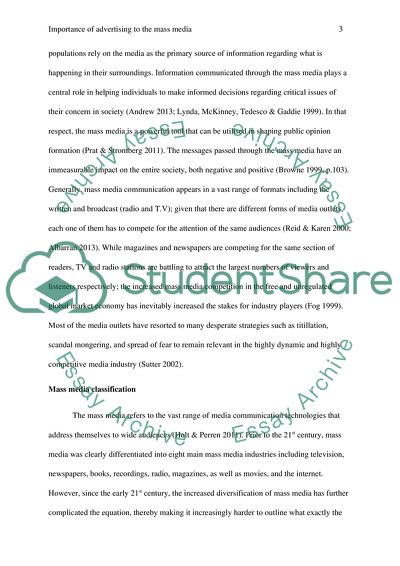Cite this document
(Importance of Advertising to the Mass Media Report Example | Topics and Well Written Essays - 3750 words, n.d.)
Importance of Advertising to the Mass Media Report Example | Topics and Well Written Essays - 3750 words. https://studentshare.org/media/1844086-how-important-is-advertising-to-the-mass-media
Importance of Advertising to the Mass Media Report Example | Topics and Well Written Essays - 3750 words. https://studentshare.org/media/1844086-how-important-is-advertising-to-the-mass-media
(Importance of Advertising to the Mass Media Report Example | Topics and Well Written Essays - 3750 Words)
Importance of Advertising to the Mass Media Report Example | Topics and Well Written Essays - 3750 Words. https://studentshare.org/media/1844086-how-important-is-advertising-to-the-mass-media.
Importance of Advertising to the Mass Media Report Example | Topics and Well Written Essays - 3750 Words. https://studentshare.org/media/1844086-how-important-is-advertising-to-the-mass-media.
“Importance of Advertising to the Mass Media Report Example | Topics and Well Written Essays - 3750 Words”. https://studentshare.org/media/1844086-how-important-is-advertising-to-the-mass-media.


